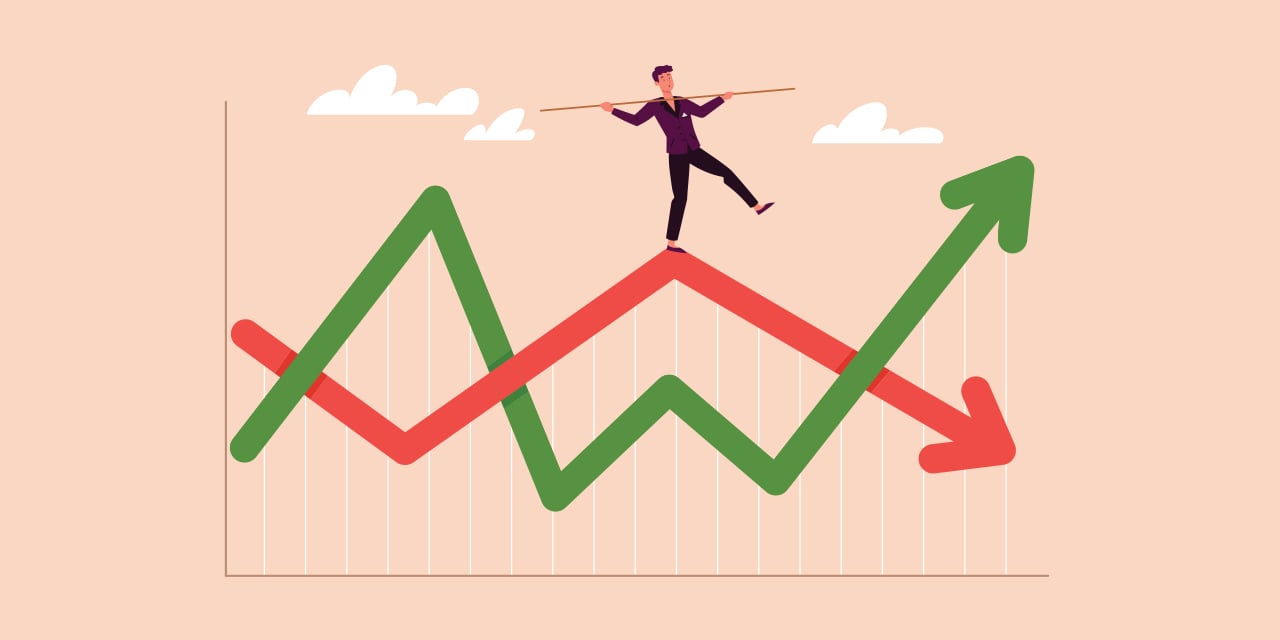
Wealth Management Mailbag: Summer 2022
In our Wealth Management Mailbag, our wealth experts answer your most pressing questions on financial planning and the stock market. In this issue we’re talking bear markets – what’s causing the current equity selloff, and advice on taking RMDs in a down market.
Answered by Ross Mayfield, Investment Strategy Analyst at Baird
There are many moving parts, but we believe the bulk of the stock market selloff can be boiled down to one item – historically high inflation.
First, inflation has pressured both consumers and corporations directly. Higher prices for gasoline, food, rent, etc., reduce the amount of nonessential spending consumers can comfortably afford. U.S. companies are feeling cost pressures too: Wages, raw materials and transportation have all gotten more expensive over the past year. Tighter wallets for consumers and corporations are a bad recipe for markets.
High inflation has also forced the Federal Reserve to raise interest rates more aggressively than expected. They do this to reduce demand, cool the economy and hopefully rein in inflation. (We’ve already seen this dynamic in real estate, where a sharp spike in mortgage rates instantly cooled a once-hot housing market.) Higher rates also make borrowing more expensive and dampen potential hiring and expansion.
Other uncertainties, such as the war in Ukraine and China’s COVID-zero policy, have added ambiguity to the economic outlook. Plus domestic politics are a factor, as midterm election years tend to see more volatile markets.
All of this has combined to send markets lower. Price multiples like the P/E ratio have fallen significantly this year, suggesting that investors are re-evaluating what they are willing to pay for a share of corporate earnings in a new environment. Company earnings will become increasingly important: Whether earnings growth slows, flattens or falls over the next 18 months will likely determine the depth and length of the selloff.
So when will it end? Since 1945, the average bear market, which we’ll define as a roughly 20+% drop in the S&P 500, has taken about eleven months from peak to trough. But bear markets often feature plenty of head fake rallies along the way to the ultimate low. We think markets will need to see inflation cool convincingly and the Fed to react accordingly (i.e., fewer or less severe rate hikes, or even rate cuts) before equities can resume higher.
Answered by Laura Davis, Financial Planner at Baird
This is a tricky time for retirees. The combination of a sliding stock market and high inflation has caused many people entering retirement to rethink their strategies. But remember that your RMDs are based on a percentage of your overall account balance. If the assets in your retirement plan have declined this year, the RMD adjusts for that if you delay taking it until your required beginning date, which is April 1st the year after you turn 72. The IRS also reduced RMDs beginning in 2022 because people are living longer. Between those two adjustments, your RMDs are probably down some this year, giving you increased flexibility in managing your retirement assets. However, keep in mind that if you delay the first RMD until the following year, you will be required to take two RMDs in the same year (e.g., the 2022 RMD that you delay until April 1, 2023, and the 2023 RMD that must be taken by December 31, 2023).
If you don’t need the money right now and you’re expecting a market rebound, you have the option of taking the RMD and reinvesting it in a taxable brokerage account. One other strategy to consider is a conversion to a Roth IRA, which does not have required minimum distributions. Investors who convert to a Roth must pay taxes on the amount of the conversion and you’ll still need to take the current year RMD before converting to the Roth IRA, but if your asset balance is down, you would be able to take advantage of a lower current tax liability.
Finally, if you don’t need the money right now, putting the RMD toward a Qualified Charitable Distribution is another option. Your Baird Financial Advisor can help you identify the best RMD strategy for your specific needs.
For more insight into managing wealth during difficult times, be sure to check out our articles on bairdwealth.com and the latest issue of Digest. Your Baird Financial Advisor is also available and ready to answer any questions you have.
The information offered is provided to you for informational purposes only. Robert W. Baird & Co. Incorporated is not a legal or tax services provider and you are strongly encouraged to seek the advice of the appropriate professional advisors before taking any action. The information reflected on this page are Baird expert opinions today and are subject to change. The information provided here has not taken into consideration the investment goals or needs of any specific investor and investors should not make any investment decisions based solely on this information. Past performance is not a guarantee of future results. All investments have some level of risk, and investors have different time horizons, goals and risk tolerances, so speak to your Baird Financial Advisor before taking action.

